An Expert Explains The Important Factors That Impact Bourbon's Flavor
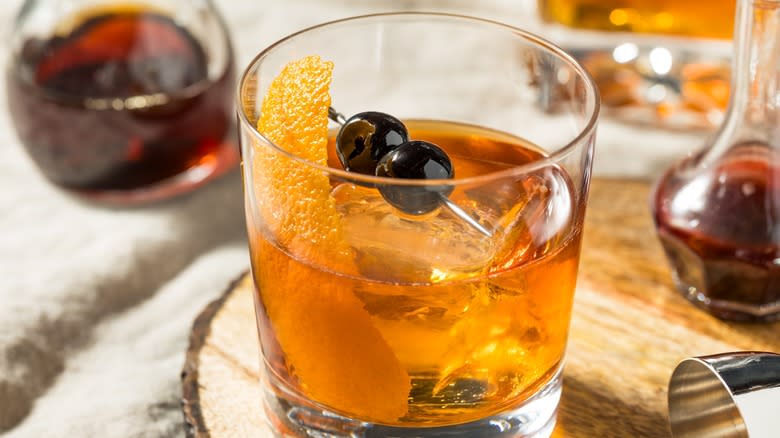
The type of mash bill used during the bourbon-making process is one of the biggest factors in developing the spirit's flavor. After all, the grains used actually impart whiskey's flavor, such as how rye imparts spiciness, corn imparts sweetness, and wheat imparts creaminess.
However, several other factors impact whiskey and bourbon's ultimate flavor, and there are the bourbon's tasting wheel's five key notes plus more than nine common tasting notes for bourbon for you to consider. Vanilla is a common tasting note in bourbon, and sometimes, you might taste fruits, spices, herbs, or floral notes. Other times, wood, smoke, and nuts are present.
To better understand all the factors determining bourbon's ultimate flavor, we spoke with Executive Bourbon Steward, Founder of Urban Bourbonist, LLC, and Executive Director of Bourbon Charity, Chris Blatner. "There are a number of factors at play that will affect the flavor of a Bourbon and that will ultimately influence its final aroma, taste, and overall character," he stated. These factors include fermentation, distillation, aging, barrel entry proof, batching and blending, bottling strength, and filtration.
Read more: The 27 Best Bourbon Brands, Ranked
The Impact Of Fermentation And Fermentation Time On Bourbon's Flavor
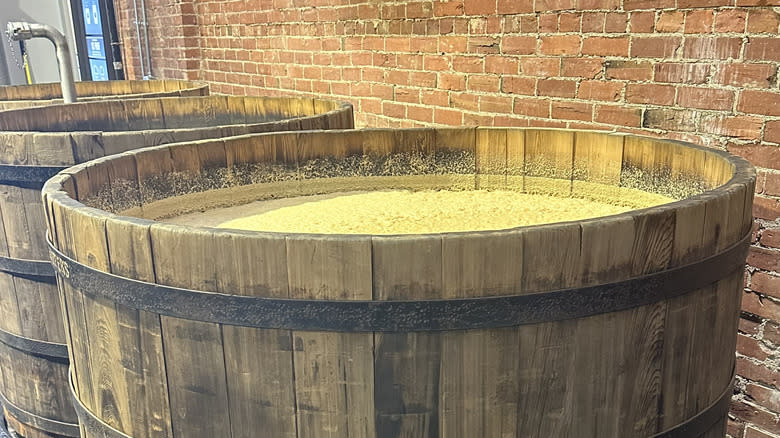
Bourbon is a type of whiskey that undergoes a fermentation process. To kickstart this process, a bourbon distiller needs yeast. But not just any yeast, as Blatner explained. While only one yeast species is used to ferment all bourbons, Saccharomyces cerevisiae, there are many unique and different strains of this yeast, and some are well-kept secrets.
"The selection of the yeast strain is extremely important, as different strains can produce a variety of flavors and aromatic compounds during fermentation. Some distilleries protect information about their yeast strains because of the unique character it adds to their bourbon," he stated. In the bourbon-making world, yeast strains are proprietary information.
Additionally, the length of the fermentation process also impacts flavor. "Generally, longer fermentations allow for the development of more complex flavors," Blatner added. Fermentation times can last anywhere from three days to weeks.
How The Distillation Process And Proof At Distillation Affect Bourbon's Flavors
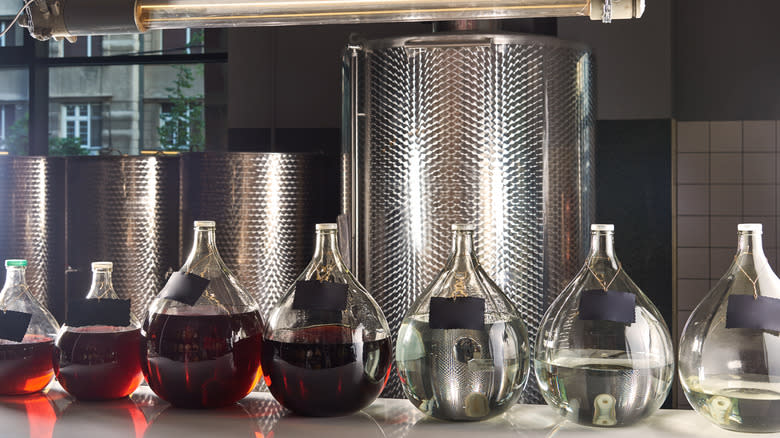
In addition to fermentation and fermentation time, another important factor impacts bourbon's flavor: the distillation process. After the fermentation stage ends, the distillation process begins, heating the " distiller beer" and collecting the resulting alcohol vapors. "Whether the bourbon is distilled in a column still or a pot still can affect its flavor profile," Blatner stated.
He added, "Pot stills often produce a richer, more robust flavor, while column stills tend to produce a cleaner, lighter spirit." If you want more flavorful bourbon, pot stills, or big pot-shaped, copper stills, are the way to go, whereas column stills produce bourbon with less pronounced flavors.
Additionally, Blatner mentioned the proof at distillation. He stated, "The alcohol content to which the bourbon is distilled can influence its taste. Distilling to a lower proof can retain more congeners (flavor compounds), which can add complexity to the bourbon." Similarly, distilling bourbon to a higher proof, a maximum of 160 proof (80% ABV), tends to result in bourbons with a more pronounced alcohol flavor.
How Long And Where We Age Bourbon Can Impact Its Flavor
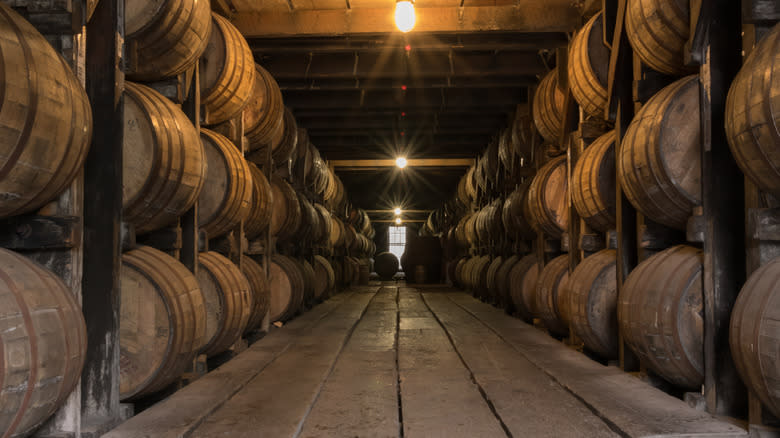
After the fermentation and distillation processes, bourbon must undergo an aging process, and Blatner wanted us to know just how much the aging process affects bourbon's flavor. "Bourbon must be aged in new, charred oak barrels," he stated. "The level of char (which ranges from light to heavy) affects the bourbon's flavor, imparting a whole range of flavors from vanilla and caramel to smokier, earthier flavors."
It is also legally required in the United States for oak barrels to be charred to make bourbon. Additionally, how much time bourbon spends in the charred oak barrels is important. "Aging allows for the extraction of flavors from the wood and the development of depth and complexity," he added. It's important to note there's a Goldilocks point of aging bourbon. Over-aging bourbon can lead to a decline in flavor, while under-aging may result in a taste that lacks sharpness and polish.
Also, note that the environment where distillers place the bourbon barrels matters. Blatner pointed out why: "The location of the warehouse and its climate conditions (temperature swings, humidity) play a major role in the aging process. Fluctuations in temperature cause the wood to expand and contract, influencing how much flavor and color the bourbon pulls from the barrel." All of the bourbon's color comes from the barrels, as it is illegal for distillers to add caramel flavors or colors to the bourbon.
Barrel Entry Proof Can Affects The Flavor Notes
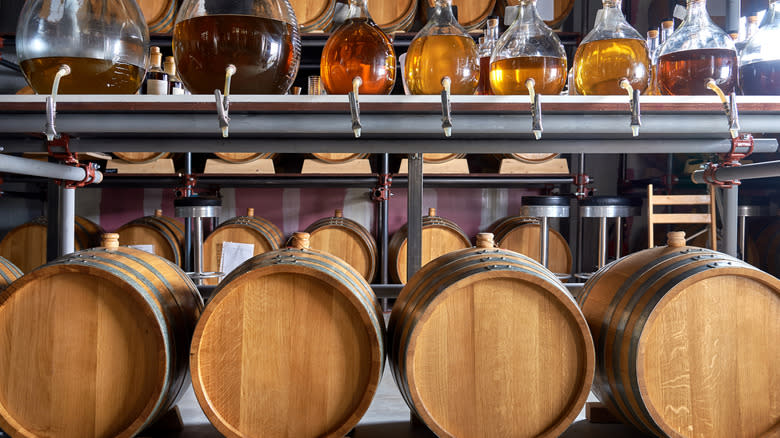
Understanding what impacts bourbon's flavor and the notes in the spirit can help us pair bourbon and food the right way and help us pick out our favorite bourbon brands. Thus, it's important to note all the factors that can shift bourbon's flavor. Aside from where the bourbon barrels rest, barrel entry proof matters, too, and the maximum is 125 proof (62.5% ABV) at barreling. "The proof at which the bourbon is put into barrels for aging affects its interaction with the wood. Lower entry proofs can lead to a different extraction rate of flavors from the barrels compared to higher entry proofs," Blatner explained.
Recently, lower-entry proofs have gained popularity, though choosing between high or low proofs is up to the distiller's preference. There's a key difference between high-proof and low-proof bourbon, and Tasting Table has compiled a list of the 12 best low-proof bourbons to buy and a list of the 16 best high-proof bourbons so you can see for yourself what the difference is.
Batching And Blending Helps Bourbon Distillers Achieve A Consistent Flavor Profile
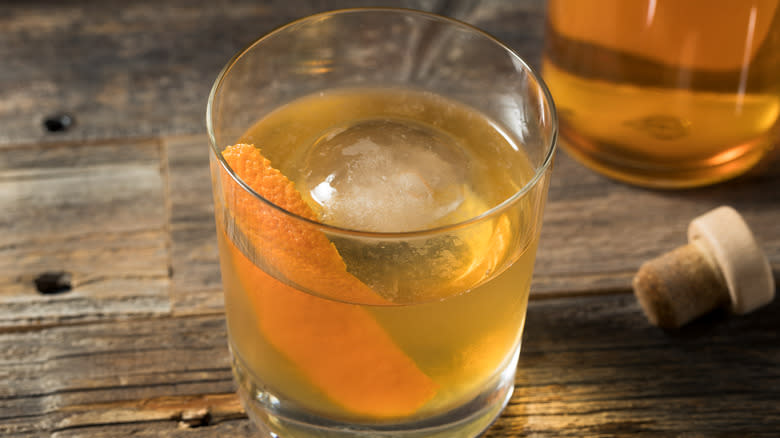
You might think we've covered all the factors that impact bourbon's flavor, but the critical stage of batching and blending remains to be considered. Blatner described this process as "an art form," stating, "[Batching and blending] is the process of selecting and combining different barrels to achieve a consistent flavor profile."
During this phase, blenders would taste samples from various barrels, noting how differences in oak, charring, and the location within the warehouse would affect each barrel's contribution, leading to flavor variations. Since conditions like temperature can vary within a warehouse or how a cask is shifted or rotated, no two barrels are ever identical, even if they originated from the same fermented mash bill and underwent the same distillation and aging process.
"Master blenders can adjust the character and taste of the final product through careful selection and blending of barrels," Blatner elaborated. The process ultimately involves mixing bourbons from two or more barrels to achieve a batch of bourbon with that consistent flavor profile he had mentioned.
Bottling Strength Influences Bourbon's Mouthfeel
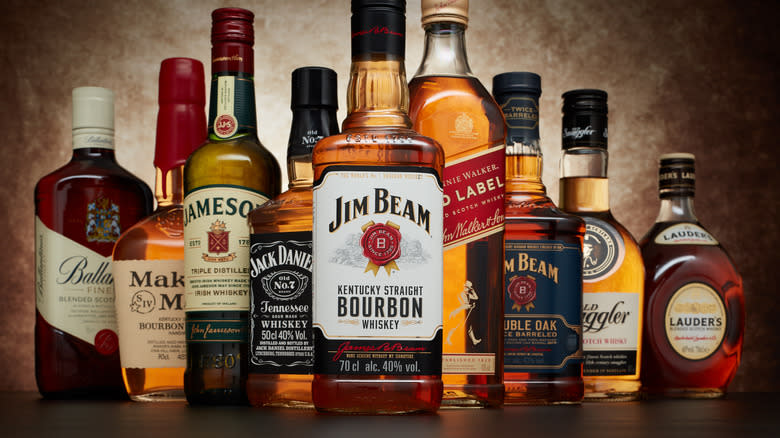
After batching and blending, one of the final two factors that impact bourbon's flavor is bottling strength. Bottling strength refers to the proof at which the bourbon is bottled, which Blatner says can influence bourbon's taste and mouthfeel.
Blatner added, "Bourbons diluted to a lower proof before bottling may be lighter and more accessible to a wider range of people..." The minimum bourbon bottling proof is 80 proof (40% ABV). Distillers add water to the bourbon blend to dilute bourbon to a lower proof.
Bourbons bottled at higher proofs are known as barrel-proof or cask-strength bourbons. "[These] offer a more intense, unaltered flavor experience," Blatner emphasized. While you may want to sip lower-proof bourbon neat, bartenders may prefer higher-proof bourbon to create better cocktails. If you wish to learn more about higher-proof bourbon, Tasting Table has explained everything you need to know about cask-strength bourbon.
Why Not All Distilleries Filter Their Bourbon
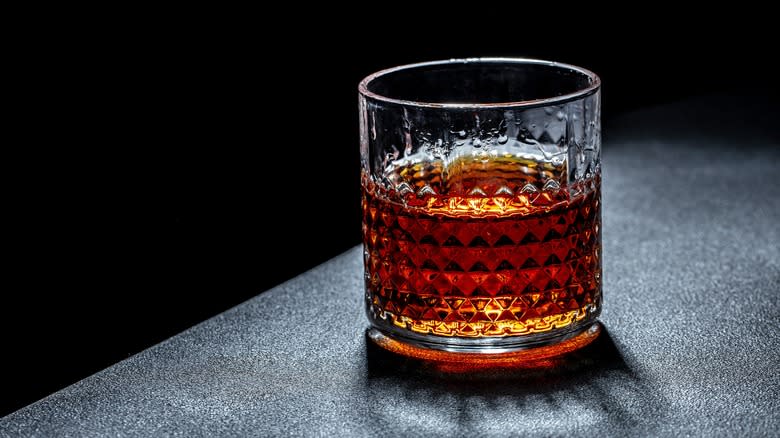
Finally, Blatner talked about filtration. He stated, "The type of filtration process used, such as chill filtration, can impact the bourbon's mouthfeel and flavor." Chill filtration involves chilling the bourbon first, then passing it through filters to remove sediment and larger particles. This prevents haze and cloudiness in the bourbon. Chill filtration can also change the flavor of the bourbon, removing tannins and some bitterness. Fats and oils are often filtered out as well.
However, not all distilleries favor filtration. Blatner added, "Some distilleries choose minimal filtration to preserve more of the bourbon's natural flavor and character." Bourbon lovers on Reddit often point out how they appreciate the fuller flavor and mouthfeel of non-chill-filtered bourbon.
Beyond filtration and all the intricacies of the bourbon-making process that we've deep-dived into with Blatner, even the choice of drinking vessel and the size of the rim of your bourbon glasses matter. Choosing the right bourbon for your palate might seem daunting, but now you understand all the different factors that impact bourbon's flavor. Next, let's explore how to choose the right bourbons for your at-home tasting.
Read the original article on Tasting Table

